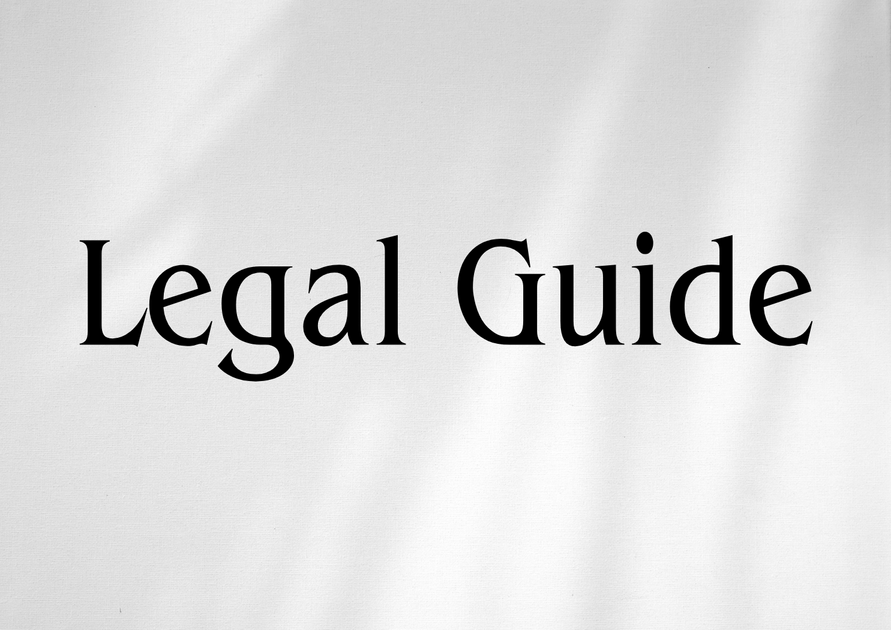Introduction: The Strategic Role of Compliance Officers in the GCC’s Transforming Financial Sector
The rapidly evolving legal environment in the Middle East has brought the role of compliance officers in Saudi financial institutions into sharp focus, especially in the context of growing cross-border financial activity and regulatory convergence across the Gulf Cooperation Council (GCC). Recent amendments in UAE law, notably the Federal Decree-Law No. 20 of 2018 on Anti-Money Laundering and Combating the Financing of Terrorism and Illegal Organizations, and updated supervisory guidelines from the Saudi Central Bank (SAMA), underscore the heightened obligations for compliance professionals in leading financial institutions. For UAE-based executives, legal consultants, and GCC businesses engaged in Saudi markets, understanding the scope of these legal duties is essential not only for risk mitigation but also for maintaining competitiveness in a regulated environment.
This analysis offers a comprehensive, consultancy-grade overview of compliance officers’ legal duties in Saudi Arabia’s financial sector, informed by the latest regional developments, drawing expert comparisons with updated UAE frameworks, and providing practical insights for implementation. Insights are tailored for C-suite executives, in-house counsel, HR managers, and legal practitioners who require actionable guidance in light of recent legal updates.
Table of Contents
- A Regional Overview: Saudi and UAE Financial Compliance Landscape
- Core Legal Duties of Compliance Officers Under Saudi Law
- Key Saudi Regulations Defining Compliance Obligations
- Comparing Saudi and UAE Compliance Laws: A Structured Perspective
- Practical Implications for UAE and GCC Businesses
- Practical Case Studies and Hypothetical Scenarios
- Risks of Non-Compliance and Strategic Mitigation
- Conclusion and Forward-Looking Guidance
A Regional Overview: Saudi and UAE Financial Compliance Landscape
Understanding the Regulatory Evolution
The compliance landscape in Saudi Arabia is grounded in a robust legal framework enforced primarily by the Saudi Central Bank (SAMA) and the Capital Market Authority (CMA). In recent years, the financial regulatory environment in Saudi Arabia has tightened, in alignment with international standards and in response to regional anti-money laundering (AML), counter-terrorist financing (CTF), and corporate governance imperatives.
The UAE, similarly, has undertaken sweeping reforms, notably through Federal Decree-Law No. 20 of 2018 and Cabinet Resolution No. 10 of 2019. These developments are directly relevant to UAE firms with operations or interests in the Saudi market.
Relevance to UAE Executives and Legal Advisors
With increasing regulatory convergence—propelled by oil market liberalization, foreign direct investment, and the upcoming UAE law 2025 updates—cross-border compliance risk has become a strategic priority. UAE-based firms entering Saudi markets, or vice versa, must thus calibrate their compliance frameworks to address both sets of regulatory expectations.
Core Legal Duties of Compliance Officers Under Saudi Law
Saudi compliance officers are not simply administrative gatekeepers; their roles are defined and empowered by a combination of statutory, ministerial, and internal regulatory mandates. Key overarching duties include:
- Implementing and monitoring regulatory compliance across all areas of the institution’s activities.
- Reporting suspicious activities to regulatory authorities (notably under SAMA’s AML guidelines).
- Conducting regular training for staff to identify, mitigate, and report compliance risks.
- Advising management and the board of directors on compliance obligations and exposure.
- Documenting and updating internal policies to mirror regulatory changes and industry best practices.
SAMA’s regulations clarify that the compliance officer is directly responsible for ensuring the institution’s AML/CTF controls, due diligence procedures, and record-keeping meet prevailing standards. Failure to do so can result in personal liability and institutional penalties.
Key Sources of Law and Regulation
- Anti-Money Laundering Law (Royal Decree M/39, 2017): Mandates exhaustive due diligence, Know Your Customer (KYC) checks, ongoing monitoring, and immediate internal and external reporting of suspicious transactions.
- SAMA Governance Rules (last amended 2021): Set general obligations for compliance function independence, reporting lines, and risk management integration.
- Capital Market Authority Regulations: Mandate internal controls, compliance program documentation, and regular board reporting, with escalating obligations for publicly listed entities.
Key Saudi Regulations Defining Compliance Obligations
Anti-Money Laundering and CTF: Royal Decree M/39
The cornerstone legal text for compliance officers is Royal Decree M/39 on Countering Money Laundering and Terrorist Financing, accompanied by the SAMA AML/CTF Guidelines (2022). The law requires financial institutions to:
- Develop and enforce detailed compliance policies and procedures.
- Perform risk-based customer due diligence at onboarding and periodically thereafter.
- Maintain transaction monitoring systems capable of flagging unusual or suspicious activity.
- Report suspicious transactions immediately to the relevant authorities.
- Ensure comprehensive record-keeping for no less than ten years.
Compliance officers are the named responsible parties for the above, supported by documented delegation frameworks. SAMA audits focus heavily on the traceability and quality of compliance officers’ decision-making and reporting chains.
SAMA Governance Rules and Board-Level Compliance
The updated SAMA Governance Rules (2021) ensure the compliance officer has unfettered access to senior management and, where relevant, the board audit committee. This is designed to prevent conflicts of interest and embed compliance into the institution’s “three lines of defense” model. Key provisions require:
- Direct reporting by the compliance officer to an independent board or audit committee.
- Autonomy in investigating and escalating compliance breaches.
- An annual compliance report detailing significant risks, incidents, and remedial actions.
Visual Placement Suggestion: Consider a process flow diagram: The Compliance Escalation Pathway – outlining stages from internal detection to board-level reporting and external notification.
Comparing Saudi and UAE Compliance Laws: A Structured Perspective
To aid legal advisors and compliance professionals operating across the GCC, the following comparison table highlights the core similarities and differences between the Saudi and UAE compliance officer regulatory frameworks—a crucial step for organizations seeking to harmonize their internal controls.
| Area | Saudi Arabia (SAMA / Royal Decree M/39) | UAE (Federal Decree-Law No. 20 of 2018 / Cabinet Resolution No. 10 of 2019) |
|---|---|---|
| Core Legal Authority | Royal Decree M/39; SAMA Regulations | Federal Decree-Law No. 20 (2018); Cabinet Resolutions |
| Reporting Lines | Direct to board/audit committee (independent) | Typically to Board of Directors or Risk/Compliance Committee |
| Scope of Duties | AML/CTF, internal controls, due diligence, risk monitoring | AML/CTF, KYC, suspicious activity monitoring, reporting |
| Record-keeping | Minimum ten years | Minimum five years (with specified exceptions) |
| Sanctions for Non-Compliance | Fines, license suspension, personal liability | Fines, reputational penalties, criminal action for willful breaches |
| Recent Amendments | Enhanced board involvement, clarified whistleblower protections (2021) | Expanded scope to designated non-financial businesses; 2024 review pending |
Visual Placement Suggestion: A penalty comparison chart illustrating fines and enforcement actions in Saudi vs UAE (to improve engagement and clarity).
Practical Implications for UAE and GCC Businesses
Why UAE Firms Should Take Notice
Many UAE-based organizations have cross-licensing arrangements or operate subsidiaries in Saudi Arabia, making compliance alignment not just best practice, but a legal necessity. Recent multilateral agreements between the UAE Central Bank and SAMA have emphasized reciprocal cooperation in oversight, data sharing, and regulatory benchmarking, meaning lapses in either jurisdiction can trigger scrutiny in both.
Critical Consultancy Insights
- Board Education is Imperative: The board and executive team must be educated—and demonstrably aware—of compliance officer duties, as personal liability increasingly extends beyond operational staff.
- Documentation is Defense: Maintain detailed minutes of compliance meetings, escalation logs, and policy updates. Regulators will request evidence of proactive compliance management.
- Technology as a Compliance Ally: Leverage robust KYC/AML software to automate detection, flag gaps, and generate audit trails that satisfy Saudi and UAE regulators alike.
Proactive harmonization of policies lets organizations leverage regional best practices, minimizes duplication of effort, and demonstrates good faith to regulators in both countries.
Practical Case Studies and Hypothetical Scenarios
Case Study 1: Cross-Border Payment Processing
Situation: A UAE-headquartered bank operating a branch in Riyadh is alerted to a series of high-value outbound remittances flagged by its compliance system for potential ties to sanctioned entities. The compliance officer undertakes enhanced due diligence, documents findings, and escalates to both SAMA and the UAE Central Bank.
Analysis: Under both SAMA and UAE regulations, the compliance officer’s responsibility to escalate suspicious activity supersedes internal confidentiality restrictions. Failure to act promptly could expose the institution—and the officer—to severe penalties.
Case Study 2: Board-Level Involvement in Compliance Oversight
Situation: A Saudi fintech company with a Dubai subsidiary discovers internal process gaps during a routine compliance audit. The compliance officer compiles a report for direct submission to the board audit committee, recommending structural reforms and employee retraining.
Analysis: SAMA’s Governance Rules and corresponding UAE Cabinet Resolutions emphasize the compliance function’s independence and its direct line to the board, not just management—a recurring area where businesses often fall short and accrue risk.
Hypothetical Example: Digital Banking Onboarding Failure
Situation: A compliance officer at a Saudi digital bank neglects to update the customer due diligence checklist after a regulatory amendment. This oversight leads to onboarding customers without necessary KYC controls, triggering an unannounced regulatory inspection.
Outcome: The institution faces a substantial fine, and the compliance officer is subject to professional sanctions for failure to keep policies abreast of regulatory requirements. This scenario underlines the importance of ongoing training and policy review.
Risks of Non-Compliance and Strategic Mitigation
Regulatory and Enforcement Risks
- Fines and Sanctions: Both SAMA and UAE regulators are empowered to levy significant fines, suspend licenses, or refer non-compliance for prosecution (ref: SAMA Disciplinary Regulations; UAE AML Decree).
- Reputational Harm: Public disclosure of regulatory breaches can erode consumer trust and impair growth opportunities.
- Personal Liability: Compliance officers can be held personally liable for willful or grossly negligent breaches.
Best Practice Compliance Strategies
| Best Practice | Description | Applicable Regulation |
|---|---|---|
| Continuous Staff Training | Periodic programs to update knowledge of new laws and regulatory expectations | SAMA Circulars; UAE Cabinet Resolution No. 10 |
| Automated Monitoring Tools | Deployment of advanced KYC/AML/CTF technology for real-time compliance monitoring | SAMA Guidelines; UAE Decree-Law No. 20 |
| Regular Internal Audits | Quarterly compliance reviews to pre-empt regulatory inspections and identify gaps early | SAMA Governance Rules; UAE Risk Management Standards |
| Whistleblower Protection Mechanisms | Policies that encourage internal reporting and protect whistleblowers from retaliation | SAMA and CMA Guidelines; Draft UAE Whistleblower Law |
Visual Placement Suggestion: Compliance Checklist infographic for compliance officers in GCC financial institutions (to facilitate internal adoption).
Conclusion and Forward-Looking Guidance
Saudi Arabia’s legal framework, alongside parallel UAE law 2025 updates, places compliance officers at the core of institutional risk management, governance, and cross-border trust. With regulatory scrutiny only set to intensify amid global AML/CTF obligations and GCC financial integration, the duties of compliance professionals are no longer static—they demand constant education, policy vigilance, and direct engagement with executive management and regulators alike.
For UAE and GCC organizations, the imperative is clear: treat compliance as a board-level strategic function, rather than a cost center. Practical steps include aligning documentation practices, investing in technology, formalizing board engagement, and instituting regular training. By doing so, institutions not only ensure compliance with the evolving demands of SAMA and UAE regulators but also position themselves as trustworthy, sustainable players in a connected regional market.
In closing, the regulatory path forward promises both opportunity and challenge. Those who respond with ambition—and rigor—will navigate this new era of GCC financial compliance with confidence and resilience.



